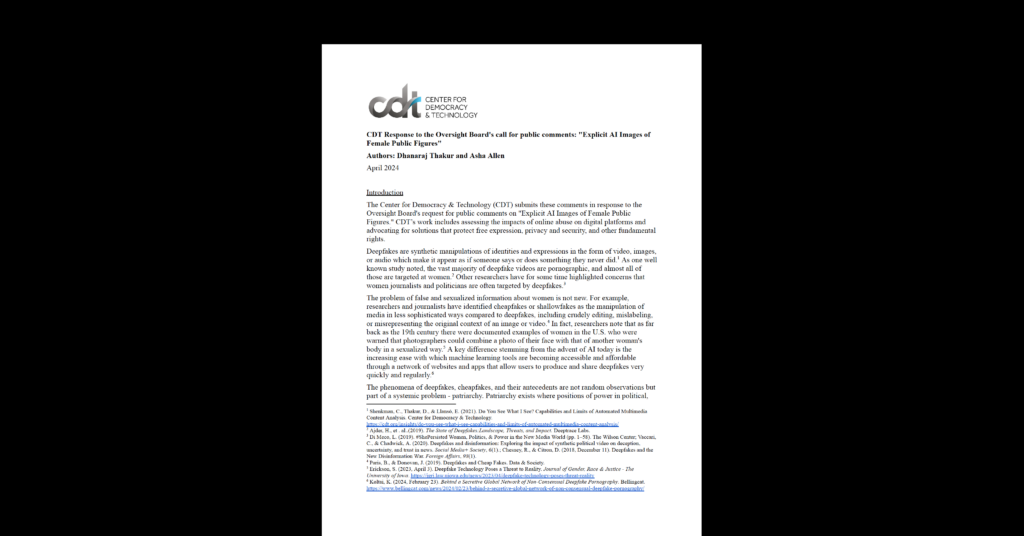FCC on Constitutionally Shaky Ground with Broadcast Indecency Policy
CDT joins TechFreedom, Public Knowledge, and the Electronic Frontier Foundation today in comments to the Federal Communications Commission urging it to tread lightly – or not at all – in revising its broadcast indecency regulations. Reiterating arguments we raised in our 2011 amicus brief in FCC v Fox, our coalition emphasizes the crumbling legal foundation for the FCC’s authority to regulate indecent content on broadcast TV and radio, as articulated in FCC v Pacifica.
As we’ve argued for years, the media landscape has changed so radically since the 1970s that the rationale for allowing the FCC to censor broadcast content has withered away. Over-the-air television and radio no longer serve as a “uniquely pervasive” medium that is “impossible completely to avoid” while being “uniquely accessible to children.” With multiple platforms for video and audio content – including broadcast, cable, on-demand video, and online streaming – and a plethora of user empowerment technologies available, parents have the opportunity to exert a greater degree of control over what content their children view than ever before. It no longer makes any constitutional sense (if it ever did) to single out the broadcast medium as meriting heightened government scrutiny of content.
The years of litigation around the FCC’s “fleeting expletives” policy demonstrate some of the drawbacks of a government censorship regime: it’s difficult to describe a content-control policy coherently or enforce it consistently. The Supreme Court ultimately ruled in favor of Fox and the other broadcasters in finding that the FCC was unconstitutionally vague in enforcing its own policy. Broadcasters, like all speakers, deserve clarity and certainty about what is and isn’t permitted, and as the FCC moves forward in considering its broadcast indecency standards, it must do so with the First Amendment first in mind.


